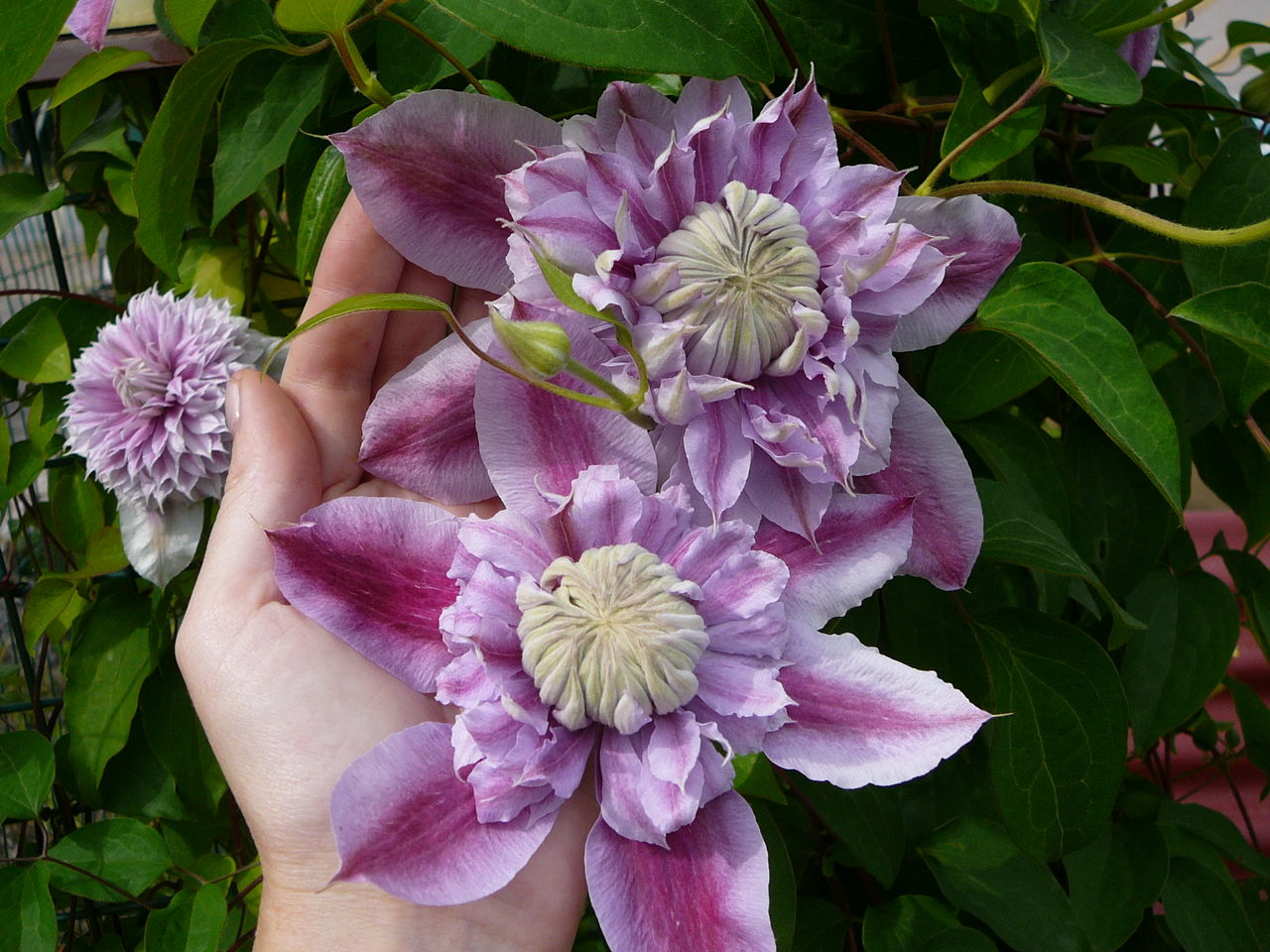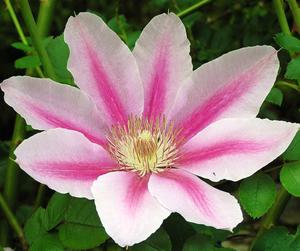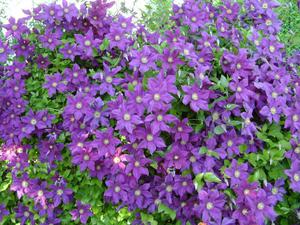Clematis Vyshinsky Cardinal is a compact, about 3 meters tall Polish variety. Differs in abundant flowering, resistance to external influences, frost-resistant.
The flowers are bright red, up to 20 cm in diameter, appear in June and bloom until September. The vine feels great both in the sun and in the shade. It can be grown as curly, and creeping plant... Suitable for growing in containers on terraces or balconies. Used for growing near walls, fences, arbors, trellises. It can climb along natural supports: shrubs, trees, and also perfectly spread over the ground.
Advantages of clematis Vyshinsky cardinal
The main advantages of the plant include the following:
- the plant takes root well, does not require special care;
- has a large assortment of varieties and colors;
- blooms profusely from spring to late autumn;
- grows well in containers.
Conditions for growing clematis
First you need to choose a place to plant the plant. The soil should be fertile, deeply dug, loose and light. The plant does not like acidic and overly moist soils. Small amounts of chalk or lime can be added to neutralize acidity.
Liana does not tolerate drought and overheating of the root system. Therefore, the soil around the plant is covered with compost. This will help prevent drying out of the soil and overheating of the roots, and will also serve as protection against frost.
Planting low crops near the base of the roots of the vine will help: arabis, alissum, lavender.
Planting clematis
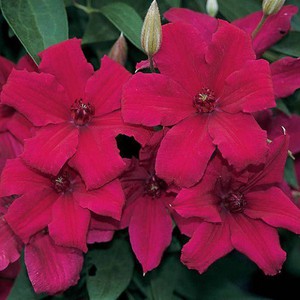 Planting a plant is best done in spring, during the period of its active development. You can plant seedlings from April to the end of October, that is, during the growing season.
Planting a plant is best done in spring, during the period of its active development. You can plant seedlings from April to the end of October, that is, during the growing season.
Humus or peat should be added to the soil, and the soil should be moderately moist. The soil should be dug deeply, because clematis can grow in one place for up to 15 years. The hole size must be at least 60x60x60 cm.
It is required to add to light soil peat, clay and rotted leaves, manure, ash and superphosphate. With increased acidity, a little chalk is added.
If the soil is wet and heavy, then drainage is placed on the bottom of the hole with a layer of 15 cm, coarse sand or fine crushed stone.
After planting, the plant must be provided with abundant and regular watering, and in hot summer weather the volume of water must be increased.
Watering and nutrition
Watering should be regular. Plant feeding is required gradually. The first feeding requires a small amount of mineral fertilizers immediately after the start of the growing season and during the budding period. The second feeding is done after the flowering of the plant and its summer pruning.
Fertilizers should not contain nitrogen for fertilizing after July. The best option is feeding with potassium. They are poured around the creeper in spring.
Preparation for wintering
Broken, dry shoots are removed. The rest fold up and lean towards the ground. No transplant required. In the spring, new shoots will begin to appear directly from the roots of the plant.
You can protect clematis from frost using spruce branches, compost or rotted foliage. Sawdust cannot be used. They will absorb moisture and freeze in winter. Sawdust thaws very slowly in spring. This often leads to damping off of the plant.
Pruning rules
Pruning is the key to proper care of clematis Vyshinsky. After pruning, clematis blooms very profusely:
- In the first year, young specimens of clematis are cut no higher than 30 cm from its base.
- The procedure is performed from early March to early April. Cut off about 1 cm above the swollen healthy kidneys. Adult specimens are cut only depending on their belonging to a particular group. Wild alpine clematis do not require pruning at all or are pruned infrequently.
- Regular pruning is necessary for hybrid large-flowered varieties to obtain abundant and strong bushes. This is a group of early flowering varieties.
- Perennials are pruned immediately after flowering, but before the formation of the ovary of new buds.
Diseases and pests
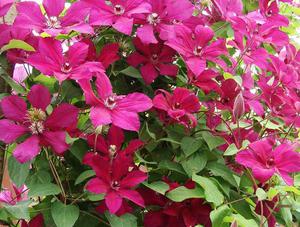 Clematis are more often susceptible to fungal diseases. Plaque of white powdery color on the leaves causes powdery mildew... The disease is caused by excessive air humidity, too dense plantings, numerous weeds.
Clematis are more often susceptible to fungal diseases. Plaque of white powdery color on the leaves causes powdery mildew... The disease is caused by excessive air humidity, too dense plantings, numerous weeds.
When watering, direct the stream of water only at the base of the bush. Water should not get on the leaves. Infected plants should be treated with fungicides up to three times with an interval of at least 7 days.
Gray mold attacks the diseased parts of the bushes, the tops of the shoots, causing white spots on the leaves.
The affected parts of the plant must be cut off and burned, and the cuts must be treated with a solution specially designed for this. The procedure must last at least 2 weeks.
Clematis in landscape design
Clematis flowers Vyshinsky cardinal look quite attractive when an avalanche descends on the walls of the buildings near the house.
Clematis looks very impressiveif positioned correctly. It looks beautiful near the trunk circles of thick tree trunks, and its stems are stretched along the tree trunk. After a certain period of time, the vine will be able to wrap around the entire trunk, creating a very interesting composition.
Clematis Vyshinsky cardinal, located along the wire frame or fence, looks original. And using a chain-link mesh, you can create a hedge.
The plant can be planted on an alpine slide or in rockeries.
Cultivation of clematis is a very exciting activity that allows you to carry out original design solutions on your personal plot.
